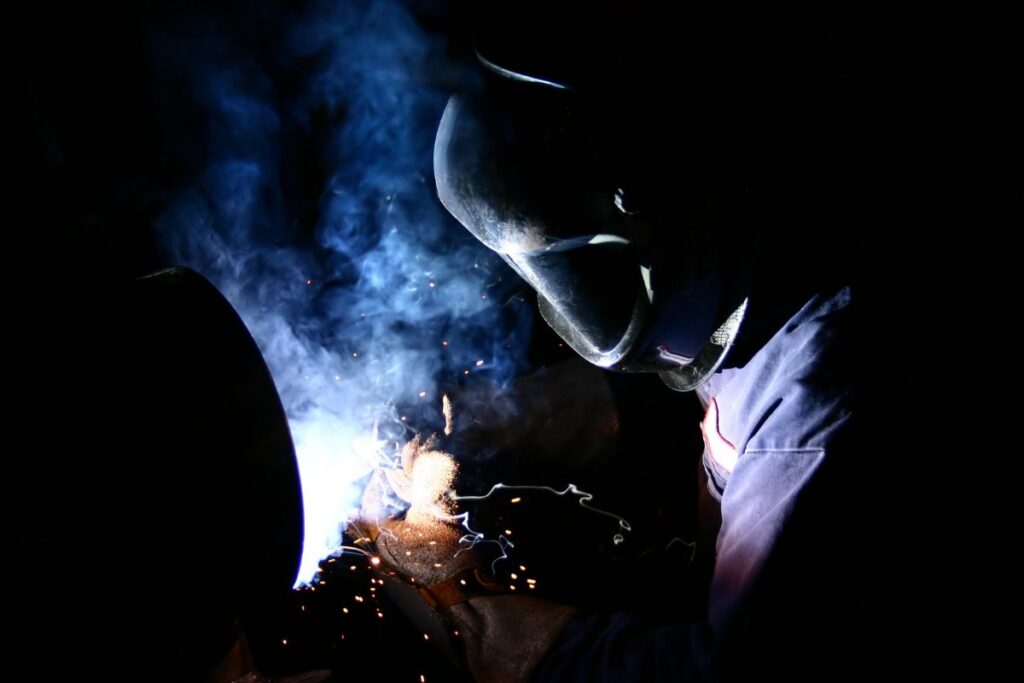
Welding, a process integral to modern manufacturing and construction, has a rich history in New Zealand that mirrors the country’s industrial and infrastructural evolution. From the early 20th century to today, welding has played a crucial role in building everything from bridges to buildings, ships to pipelines. The history of welding in New Zealand is not just a tale of technological advancements but also a story of how this skill shaped and was shaped by the nation’s growing industries.
Welding technology began to take root in New Zealand in the early 1900s, during a time when the country was rapidly industrialising. The early 20th century saw the introduction of gas welding and the development of basic arc welding techniques. Which were initially used for shipbuilding, railway construction, and repair work.
The first documented use of welding in New Zealand was during the construction of the Otira Tunnel, one of its most significant engineering feats. The tunnel, which connects Canterbury to the West Coast, required advanced welding techniques for installing steel reinforcements and repairing machinery used during construction. This project marked the beginning of welding as a vital component of New Zealand’s infrastructure development.
The outbreak of World War I and World War II significantly accelerated the development and adoption of welding technologies in New Zealand. During these periods, the demand for shipbuilding, aircraft construction, and armament manufacturing led to substantial advancements in welding techniques and an increase in the number of skilled welders.
In World War II, New Zealand’s contribution to the war effort included the production of naval vessels and aircraft components, which relied heavily on welding. The country’s shipyards, particularly in Auckland and Wellington, became hubs of activity, with welders working around the clock to meet the demands of the war. This era saw the widespread adoption of arc welding and the introduction of new techniques such as submerged arc welding, which allowed for more efficient and stronger welds.
The war also highlighted the need for a skilled workforce, leading to the establishment of welding training programs across the country. These programs laid the foundation for the development of a robust welding industry in New Zealand, which would continue to grow in the post-war years.
The post-war period was a time of significant growth and change for New Zealand’s welding industry. The rapid expansion of infrastructure projects, such as the construction of bridges, power stations, and pipelines, created a high demand for skilled welders and advanced welding techniques.
One of the most notable projects of this era was the construction of the Auckland Harbour Bridge, completed in 1959. This iconic structure, which remains a vital link between Auckland and its northern suburbs, required extensive welding work. The bridge’s construction showcased the capabilities of New Zealand’s welding industry and the importance of welding in large-scale infrastructure projects.
During this period, the introduction of new welding technologies, such as gas metal arc welding (GMAW) and gas tungsten arc welding (GTAW), allowed for more precise and efficient welding processes. These advancements made it possible to weld a wider variety of materials, including stainless steel and aluminium, which were increasingly used in construction and manufacturing.
The latter half of the 20th century saw further advancements in welding technology and a growing emphasis on safety and quality. The introduction of computer-aided welding and automated welding systems revolutionised the industry, allowing for great precision, consistency, and efficiency.
In the 1970s and 1980s, New Zealand’s welding industry continued to expand, driven by the construction boom and the development of the oil and gas industry. The construction of offshore oil platforms, pipelines, and refineries required advanced welding techniques and a highly skilled workforce. This period also saw the emergence of specialist welding companies, which provided services to industries such as aerospace, automotive, and defence.
The 1980s and 1990s also brought about a greater focus on safety and quality control in welding. The establishment of industry standards and certifications, such as those provided by the New Zealand Welder Centre, ensured that welders were trained to the highest standards and that their work met the strict requirements of modern construction and manufacturing.
The 21st century has seen some continued growth and innovation in New Zealand’s welding industry. Advancements in technology, such as laser welding, friction stir welding, and electron beam welding, have opened new possibilities for the industry, and allow for the welding of complex materials and components with greater precision than ever before.
The construction of major infrastructure projects, such as the Waterview Tunnel in Auckland and the Christchurch rebuild following the 2011 earthquake, has further demonstrated the critical role of welding in New Zealand’s development. These projects have required the use of advanced welding techniques and the expertise of highly skilled welders, highlighting the importance of ongoing training and education in the industry.
In recent years, there has also been a growing emphasis on sustainability in welding. The development of environmentally friendly welding processes, such as the use of alternative fuels and the reduction of waste and emissions, reflect the industry’s commitment to minimising its environmental impact while maintaining high standards of quality and safety.
As New Zealand continues to grow and develop, the welding industry will remain a cornerstone of the country’s infrastructure and manufacturing sectors. The ongoing demand for skilled welders, coupled with the continuous advancement of welding technologies, ensures that welding will continue to play a vital role in New Zealand’s future.
The Welding Academy in New Zealand provides training and education to the next generation of welders. By equipping students with the skills and knowledge needed to meet the challenges of modern welding, the Academy is helping to secure the future of this essential trade in New Zealand.
As we look to the future, welding will continue to be an integral part of New Zealand’s industrial landscape. From building the nation’s infrastructure to contributing to global manufacturing, welding has shaped and will continue to shape – the future of New Zealand.